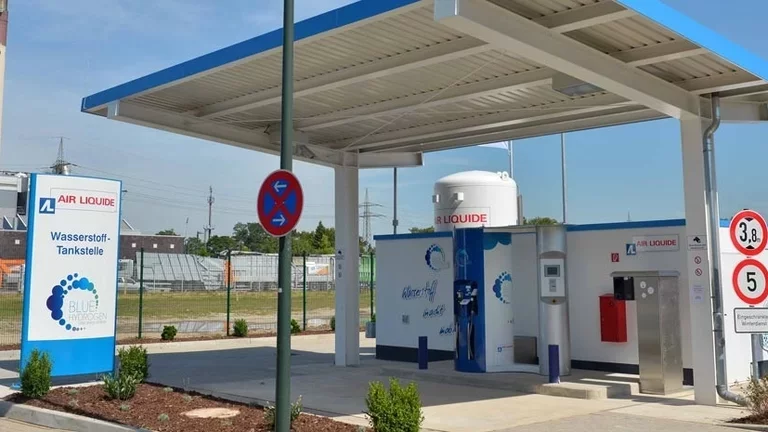A first Air Liquide hydrogen filling station in the Netherlands
- Press Releases
- Hydrogen

The European Union is supporting a hydrogen mobility deployment program.
Air Liquide announces that it is investing in, installing and commissioning a new public hydrogen filling station in Rotterdam, Netherlands, for fuel cell electric vehicles, in collaboration with the Dutch Ministry of Transport and the Environment.
This project has the financial backing of the European Union as part of the Trans-European Transport Networks (TEN-T) program. These TEN-T community funds constitute an important source of European Union funding for transport infrastructures. This is the first time that European TEN-T funding has been allocated to the development of hydrogen electric mobility.
This station will be the first Air Liquide hydrogen filling station located in the Netherlands. With the capacity to provide fifty fills per day, this dual-pressure station, which will operate at 350 and 700 bar, will supply hydrogen for fuel cell electric vehicles. One fill will provide these vehicles with an autonomy of 500–600 km.
This station will open to the public in late 2013 as part of a European hydrogen infrastructure deployment project run by Air Liquide and six other European partners*. The project also includes studies on the opening of filling stations in four European countries: France, Denmark, Sweden and the Netherlands.
François Darchis, Senior Vice-President and a member of Air Liquide’s Executive Committee, commented: “Air Liquide is proud to be playing an active role in this new project supported by the European Union. This development demonstrates the Group’s commitment to contributing to the deployment of the ‘hydrogen energy’ infrastructure worldwide. Hydrogen is one of the innovative solutions that offer a response in the short term to the challenges of sustainable mobility: reducing greenhouse gases, local pollution in our cities and dependency on oil-based fuels thus contributing to the preservation of the environment. Following on from recent initiatives supported by the British and German governments, the ‘hydrogen energy’ drive continues to move forward in Europe.”
*HIT, Hydrogen Infrastructure for Transport
This project is run by the Dutch Ministry for Transport and the Environment, Air Liquide, the Association Française de l’Hydrogène et des Piles à Combustibles (‘French Hydrogen and Fuel Cell Association’, AFHYPAC), the Copenhagen Hydrogen Network (CHN), the Association des Régions Européennes pour l’Hydrogène, les Piles à Combustibles et l’Electro-mobilité (‘Association of Hydrogen, Fuel Cells and Electromobility for European Regions’, HyER), Hydrogen Link Denmark and Hydrogen Sweden.
Director of External Communications
+33 (0)1 40 62 58 49
media@airliquide.com